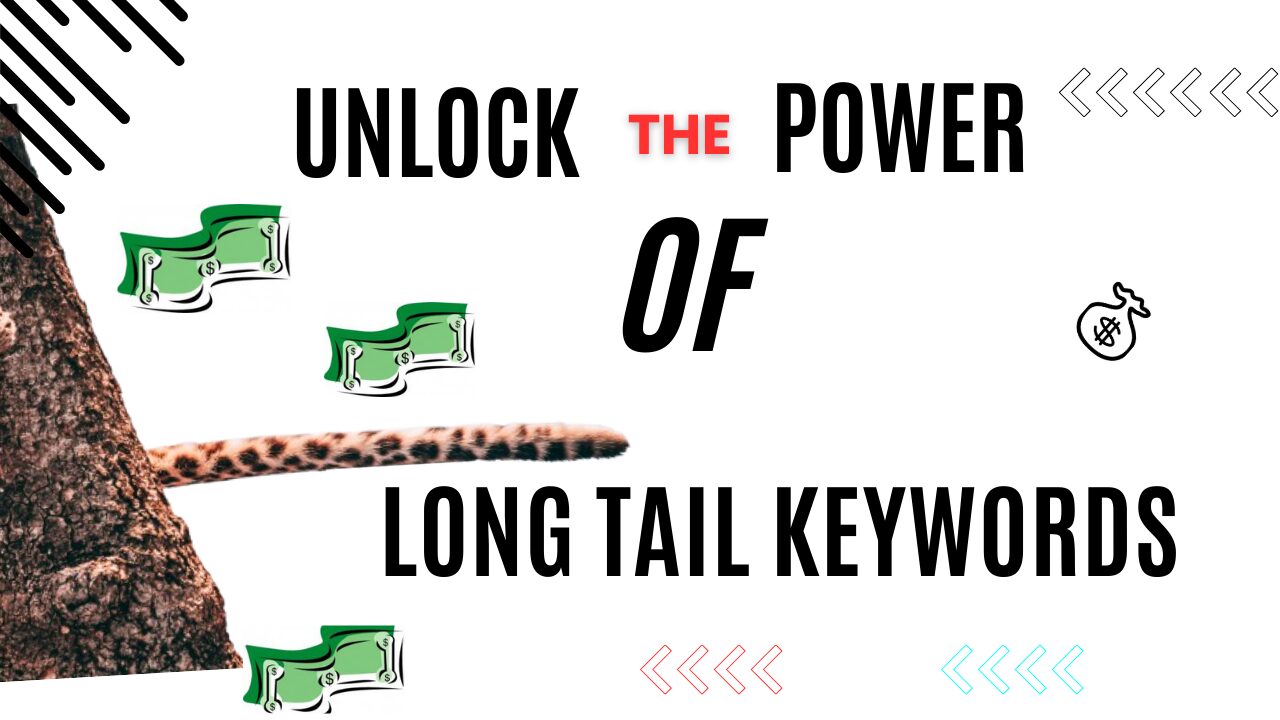Are you frustrated by the fierce competition for short, high-volume keywords?
You’re not alone.
Every website owner dreams of ranking on Google’s first page, but most overlook a simple solution: long-tail keywords.
These are the secret sauce to attracting highly targeted traffic—people actively searching for what you offer.
Imagine ranking for phrases that bring in visitors who are ready to buy.
That’s the power of long-tail keywords.
In this lesson, we’ll explore how you can find and use them to boost your rankings and attract the right audience.
My Journey from Keyword Struggle to Success
A few years ago, I was caught in a frustrating cycle.
I targeted popular keywords like “SEO tips” and “website traffic,” hoping to climb the rankings.
But with millions of other sites competing, I barely made it to page three of Google.
Everything changed when I shifted my focus to long-tail keywords.
Instead of “SEO tips,” I optimized for phrases like “SEO tips for small e-commerce websites.” Suddenly, I saw a difference—my content ranked higher, traffic increased, and visitors were more engaged.
The best part?
These visitors weren’t just browsing—they were buying.
That’s when I realized: long-tail keywords aren’t just about traffic; they’re about targeted traffic.
How to Find and Use Long-Tail Keywords
1. What Are Long-Tail Keywords?
Long-tail keywords are specific, multi-word phrases that narrow down search intent.
While “SEO tips” is broad, “SEO tips for local businesses in New York” is targeted.
These keywords:
• Face less competition.
• Attract users with clear buying intent.
• Improve conversion rates.
2. Why Long-Tail Keywords Work
According to a study by Ahrefs, 95% of all keywords get 10 or fewer searches per month.
These low-volume searches represent untapped opportunities.
Instead of competing for high-volume keywords, focus on these hidden gems.
3. Ways to Use Long-Tail Keywords
a. Blog Post Titles
Use long-tail keywords in your blog titles.
For example:
• Instead of “SEO Tips,” try “SEO Tips for Small Business Owners in 2024.”
b. Subheadings
Include long-tail keywords in subheadings. This improves SEO and keeps readers engaged.
c. Meta Descriptions
Write meta descriptions that include long-tail keywords to improve click-through rates.
d. Product Descriptions
If you run an e-commerce site, use long-tail keywords to describe your products.
e. FAQ Sections
Create FAQ sections targeting specific questions users might search for.
4. Finding Long-Tail Keywords with Paid Tools
If you can invest in paid tools, here are some excellent options:
• SEMrush: Offers in-depth keyword analysis, including search volume, difficulty, and related long-tail keywords.
• Ahrefs: Great for keyword research and competitive analysis.
• Moz Keyword Explorer: Provides keyword suggestions and SERP analysis.
• Ubersuggest: Offers keyword ideas and content suggestions.
5. Free Alternatives to Find Long-Tail Keywords
For those on a budget, here are 10 ways to find long-tail keywords:
1. Google Autocomplete: Start typing your keyword in Google’s search bar and note the suggestions.
2. Google’s “People Also Ask”: Look for related questions users frequently search.
3. Google Trends: Identify trending long-tail keywords in your niche.
4. AnswerThePublic: Generates long-tail keyword ideas based on common questions.
5. Quora: Browse questions people ask about your topic.
6. Reddit: Check niche-specific subreddits for frequently discussed topics.
7. YouTube Suggestions: Type your keyword in YouTube’s search bar for related phrases.
8. Amazon: Look at product titles and descriptions for keyword ideas.
9. Social Media Hashtags: Identify hashtags related to your niche and convert them into long-tail keywords.
10. Customer Feedback: Pay attention to how customers describe their problems or needs.
Ready to Connect with Your Readers?
Now that you know how to unlock the power of long-tail keywords, it’s time to take the next step.
Ranking high is essential, but keeping readers engaged is what converts traffic into leads.
That’s where lesson two comes in: “Write for Humans, Not Just Algorithms.”
In the next lesson, we’ll explore how to create content that resonates with your audience while still satisfying search engines.
Trust me, this approach will transform how visitors engage with your site.
Don’t Miss Lesson 2!
Want to learn how to write content that ranks and connects with readers?
Join me in Lesson 2: Write for Humans, Not Just Algorithms. You’ll discover:
• How to craft content that builds trust and authority.
• Tips for balancing SEO with readability.
• Strategies to keep readers coming back.
Read Lesson 2 Now! and take your content to the next level!





0 Comments